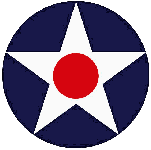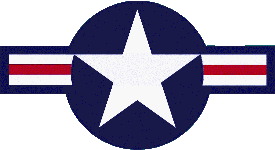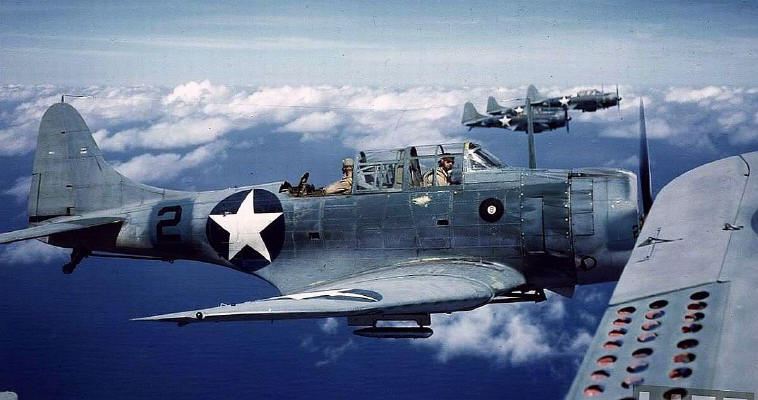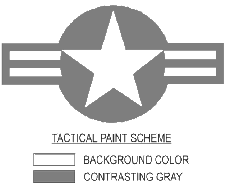Modelling-ABC by Wilfried Eck |
N
Collection of war memorabilia at Washington, DC. Photos taken in WW II present a problem, for sometimes they were captioned afterwards without knowledge of the original situation in which the photo was taken. Even worse publishers occasionally take what seems appropriate, so you can see a Japanese "Jill" shot down during the battle of Midway, the label "National archives" guaranteeing authenticity (in truth the B6N "Jill" appeared one and a half years after the battle of Midway). Such mistakes even occur in such otherwise excellent publications like the Monogram series of camouflage and markings of US Navy aircraft.
 |
 |
 |
 |
 |
 |
 |
 |
 |
 |
 |
 |
 |
 |
| A | CH | CZ | DK | D | FIN | F | GB | IT | L | NL | N | PL | S |
 |
Insignia of the
United States of America - Colors - |
 |
| The appearance of aircraft
as a weapon of war in World War I made nationality markings, a "national
insignia," urgently necessary to distinguish friend from foe. Starting
with Great Britain and France, round shapes, a dot with two concentric
circles of equal strength, emerged, while Germany and its allies relied on
angular symbols, usually a cross, to distinguish them. When the U.S.A. entered the war in 1917, they chose a middle way, a blue disc with a five-pointed white star, centered in it a red dot. Again, initially seen only on the wings. Unfortunately, the differences between the films used at the time - ortho- or panchromatic - do not allow any reliable statement about the exact color tones. However, it is safe to say that darker, muted tones developed over the course of time. With the introduction of official color tables such as "ANA" (Army/Navy) and "Federal Standard 595a", clarity was finally achieved here. |
 |
%20prob.%20Kweilin.jpg) |
|
| SBD Dauntless photo via ww2db | P-40N Warhawk photo via ww2db |
| As can be seen from original aircraft, "Insignia Blue" is a very muted color, because of the high proportion of "Sea Blue" (FS 15042) and black (FS 17038) there is not much (dark) blue left to see. Also, "Insignia Red" is not the same as "Scarlet Red". | ||||||||
| The problem of finding the right color tone was caused by the fact that the public had only been told that the disc was blue. What kind of blue remained an open question and black and white photos were not much help either, as blue appeared differently with pan or orthochromatic film. Accordingly, the blue also differed in the first color publications and even if the correct hue was known, it could only be reproduced approximately for technical printing reasons. Since graphic designers and decal manufacturers used this as a guide, the assumption that the U.S. national insignia was a bright blue became the supposed truth through constant repetition. | ||||||||
| The official color shades are: | ||||||||
|
||||||||
| Note: The first digit of FS indicates the gloss level, "1" = glossy, "2" = semi gloss, "3" = nonspecular. | ||||||||
| The fact that "Insignia Blue" is very dark can be easily seen in WW II photos. It is darker than the already muted "Sea Blue" of the aircraft paint. | ||||||||
| The color is lightfast, 'fading only after a long time and if, then not to light blue, but more to a bluish dark gray. | ||||||||
 |
||||||||
| "Tactical Paint Scheme:
From 1980 to 1982, the U.S. Navy developed a camouflage pattern in shades of gray for aircraft on tactical missions, including the insignia. Each type was given its own design. In the insignia, the previous "Insignia White" was replaced by the color of the aircraft paint at that location. Instead of "Insignia Blue" and "Insignia Red" the contrasting lighter or darker gray. |
||||||||
|
||||||||
|
||||||||
|
|
Pale, sick of malaria and tropical skin disease most of the time, seemingly coldly reserved and taciturn Hiroyoshi Nishizawa nevertheless was most respected by his comrades. Affectionally called "the devil", unsurpassed in his flying manouvers and undefeated he died in a transport plane on a ferry flight to Clark Field, Manila, in October 26th 1944. His kill score then amounted to about 85 Allied planes, the exact number will never be known, because kills were credited to the unit and not the individual. In short: The best fighter ace Japan had (surviving an overwhelming number of Allied planes in an inferior aircraft was a feat itself).
One of his most memorable feats was talking his comrades Sakai and Ota into a double of three succesive loops over the Allied airfield of Port Moresby, New Guinea. Lesser so his talents as instructor.
Recommended link (though date of death wrong): http://usfighter.tripod.com/hiroyoshi_nishizawa2.htm